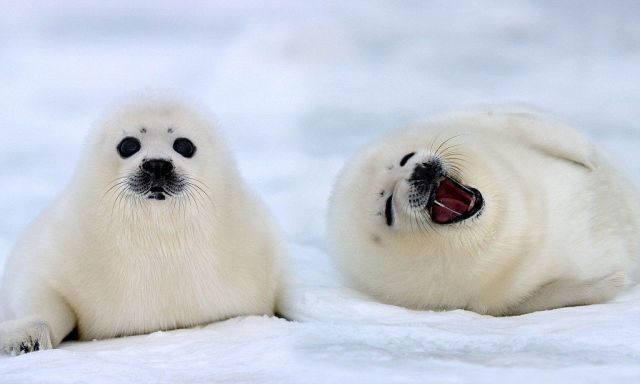The mature harp seal has pure black eyes. It has a silver-gray fur covering its body, with black harp or wishbone-shaped markings dorsally. Lactating female harp seals spend about 80% of the time in the water and 20% of the time on the fast-ice weaning or near their pups. However, almost half of the time spent in the water is at the surface, well beyond what is expected to recover from dives. The harp seal's eyes are large for its body size and contain a large spherical lens that improves focusing ability.
On ice, the mother identifies her offspring by smell. This sense may also warn of an approaching predator. Underwater, the seal closes its nostrils, disabling its sense of smell. Its whiskers, called vibrissae, lie in horizontal rows on either side of its snout. They provide a touch sense with labeled line coding, and underwater, also respond to low-frequency vibrations, such as movement. Harp seals spend relatively little time on land compared with time at sea.
They are social animals and can be quite vocal in groups. Within their large colonies, smaller groups with their own hierarchies form. On the ice, pups call their mothers by yelling and mumbling while playing with others. Adults growl and warble to warn off predators.

